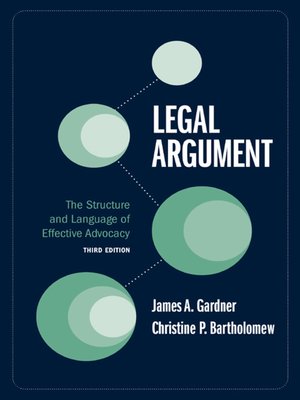
Sign up to save your library
With an OverDrive account, you can save your favorite libraries for at-a-glance information about availability. Find out more about OverDrive accounts.
Find this title in Libby, the library reading app by OverDrive.



Search for a digital library with this title
Title found at these libraries:
| Loading... |
Legal Argument: The Structure and Language of Effective Advocacy is a full-featured guide designed primarily for law students in research, writing, analysis, and trial advocacy classes and moot court programs. Inside you'll find detailed explanations of how lawyers construct legal arguments and practical guidelines to the process of molding the raw materials of litigation—cases, statutes, testimony, documents, common sense—into instruments of persuasive advocacy. You'll also find writing guidelines that show you how to present a well-constructed legal argument in writing in a way that legal decision makers will find persuasive. The centerpiece of this indispensable work is its syllogism-based step-by-step method, designed to walk the advocate through the process of crafting a winning argument. Intuitive organization presents the material in five parts:






